|
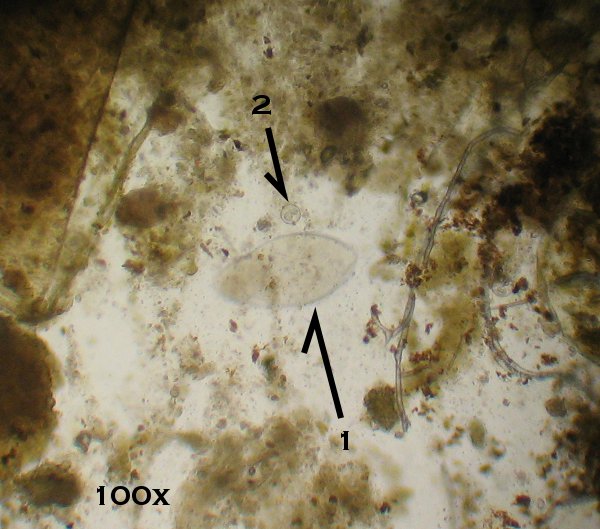
First off, we have a ciliate (1) at 100x magnification.
These guys can be very large and are quite mobile, making them nice and easy to see.
These critters are so named for the little hair-like structures (cilia) that
enable them to move around. The best part is that ciliates are harmless to your reptile.
Coccidia, on the other hand (2), can definitely be harmful, especially in large numbers.
Typically, if a reptile has low numbers of coccidia and is eating and acting normally (i.e.,
there's no reason to believe anything is wrong), then there's probably no need to treat them.
If the reptile gets sick or has a depressed immune system, though, any parasite like coccidia
can take advantage of this and cause even more problems, so it's best to get them treated.
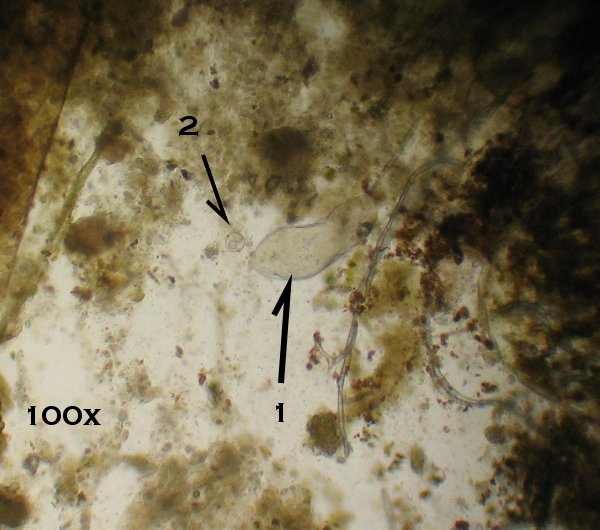
Here's another image of the same ciliate (1) and coccidia oocyst (2). (Oocysts are kind of like
the "egg" of a parasite.) The ciliate was fun to watch. He's bendy!
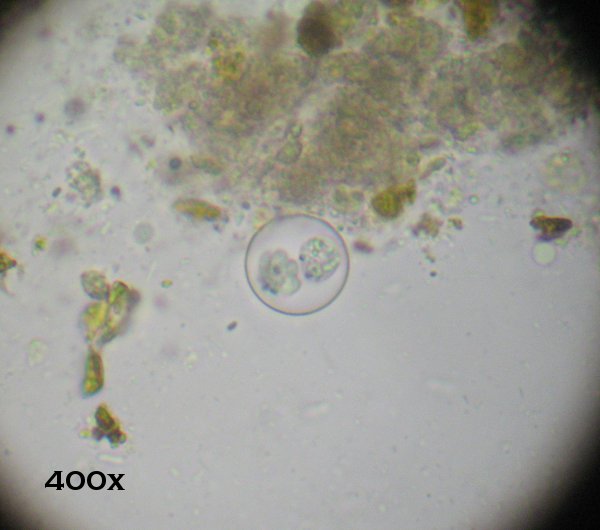
A coccidia oocyst at 400x magnification. There are several different types of coccidia, of which
the two most common are of the genus Iospora and
Eimeria. The ones shown here are Iospora and can be identified by the two
clumps of stuff in the middle. (Like my super-scientific terminology?) Eimeria
has one messy-looking clump in the center instead of two.
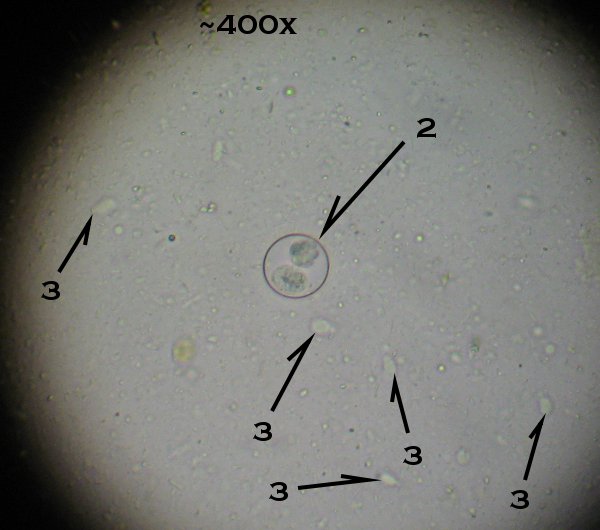
Some of the most common parasites in reptiles are generally referred to as flagellates. Along with
a coccidia oocyst (2), this picture shows several flagellates of the genus
Monocercomonas (3). These types of parasites
tend to be relatively harmless in small numbers. Also, 400x magnification, as shown here, is
overkill for identifying most parasites. Usually 100x will do just fine. Too high a
magnification causes things like bacteria to become visible, which can easily be
misidentified as parasites.
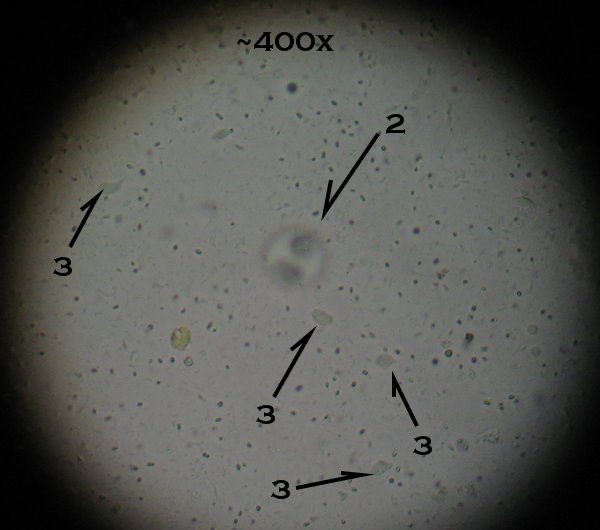
Here is the same slide but focused on the Monocercomonas (3). I call these guys (and
the other common flagellate, Trichonomas [not pictured]) the "dancing jigglies."
They jiggle and bounce around like they're loaded up on caffeine. Sometimes I wonder how they
actually get anywhere!
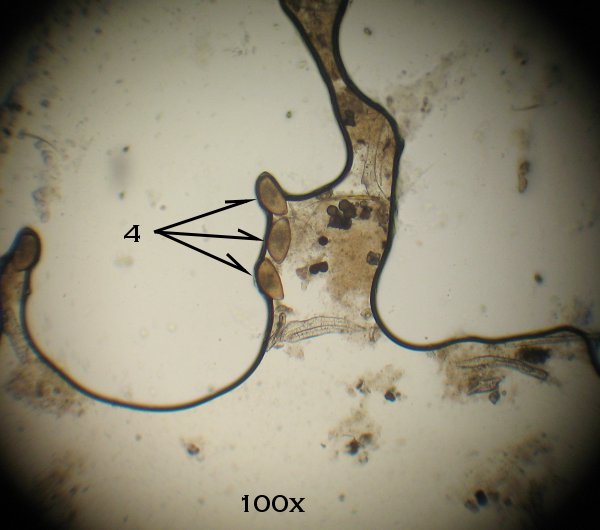
Another of the more common parasites is the pinworm. Shown here are pinworm ova (4); pinworms
themselves actually look like...well...worms. As with the others, in small numbers, these
guys are okay. It's possible they could even be beneficial.
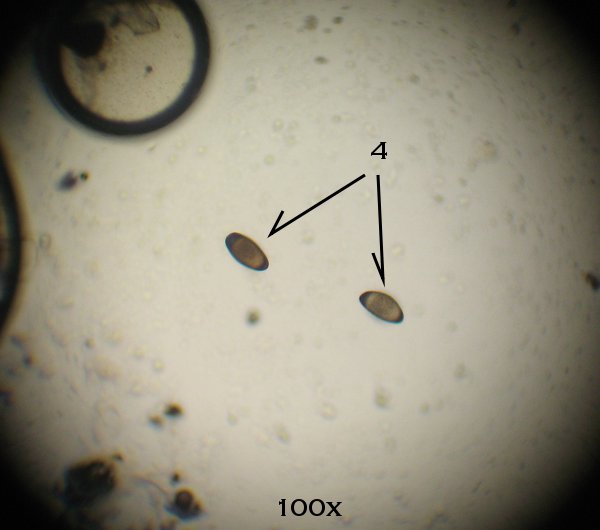
A couple more pinworm ova by their little lonesomes.
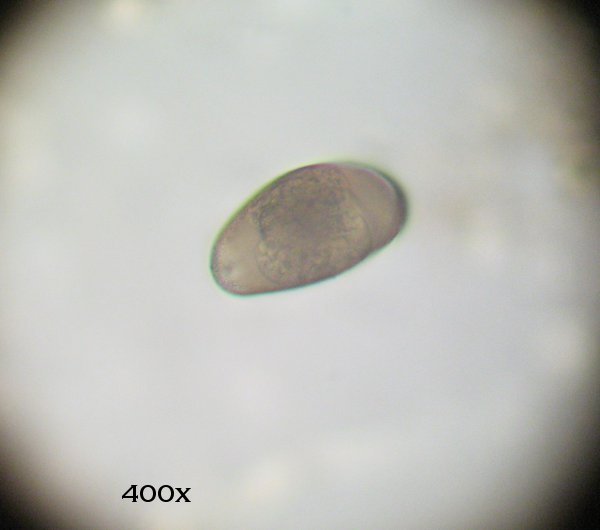
Here's a pinworm ovum at 400x magnification. The glob in the middle is a developing baby pinworm.
Aww, how cute! (Not really.)
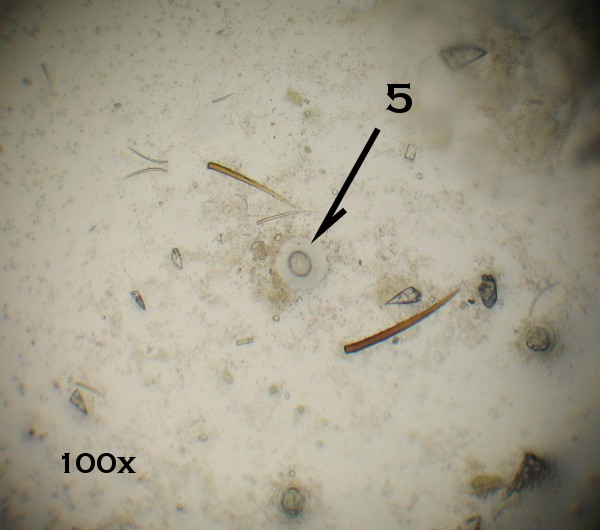
This large fellow is a tapeworm ovum (5), along with a couple cricket hairs. Tapeworms are one
of those things that need to be treated; they're not good for your reptile. Thankfully, tapeworms
are fairly uncommon.
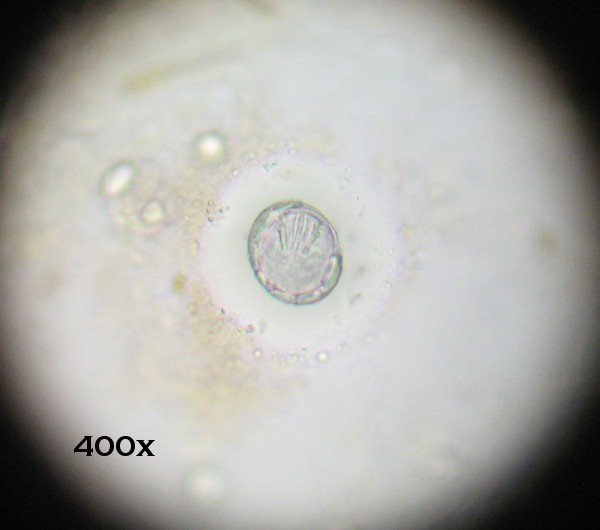
Tapeworm ovum at 400x magnification. The bony structures in the middle threw me off for a long
time when I was trying to figure out what these things were. Those structures will be the
jaws of the tapeworm, which it uses to hang onto the inner lining of the intestine of its host.
Not pictured yet: Eimeria (coccidia), Trichonomas (flagellate), Microsporidium oocysts.
| 





